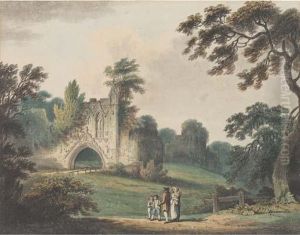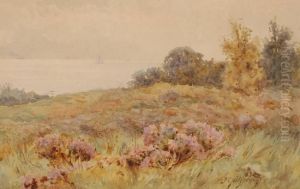Joseph S. Halfpenny Paintings
Joseph S. Halfpenny was an English artist, primarily known for his work as an architectural draughtsman and antiquary. Born in 1748, Halfpenny was active during a period in which interest in Gothic architecture and medieval art was resurging, which is often referred to as the Gothic Revival period in the late 18th and early 19th centuries.
Halfpenny's contributions to the field of architectural drawing were significant during his lifetime. His work often involved detailed illustrations of existing architectural structures, particularly those with historical significance. He was meticulous in his attention to detail, and his drawings served as important records of architectural heritage, especially at a time when many medieval buildings were being neglected or altered.
One of Halfpenny's notable works is 'Gothic Ornaments in the Cathedral Church of York' published in 1795, which he produced in collaboration with his son Joseph Halfpenny. This publication was an important contribution to the study of Gothic architecture and played a role in influencing the Gothic Revival movement. It contained a series of plates that meticulously illustrated the ornate Gothic details found within York Minster, one of the finest medieval buildings in England.
Joseph S. Halfpenny's work was appreciated by contemporaries for its accuracy and the beauty of his illustrations. He helped to foster an appreciation for the Gothic style at a time when neoclassicism was the dominant architectural fashion. His drawings remain valuable to historians and architects, as they provide a precise historical record of architectural details and styles that might otherwise have been lost to time.
Halfpenny passed away in 1811, but his legacy continues through his contributions to architectural history and the preservation of Gothic architectural elements. His work is a reminder of the importance of documentation in the historical arts and serves as an inspiration for those who seek to preserve and understand the past through its physical structures.

